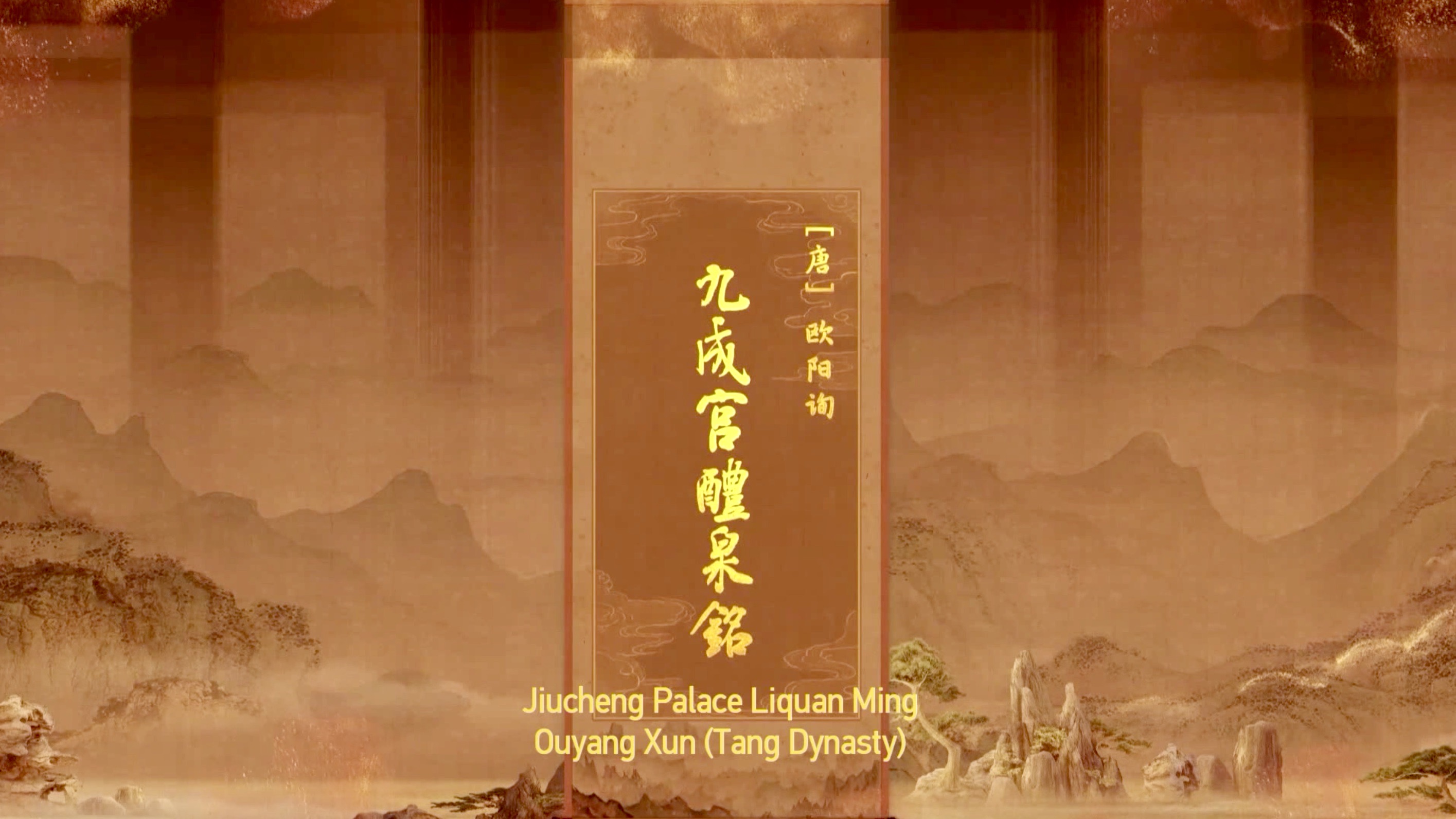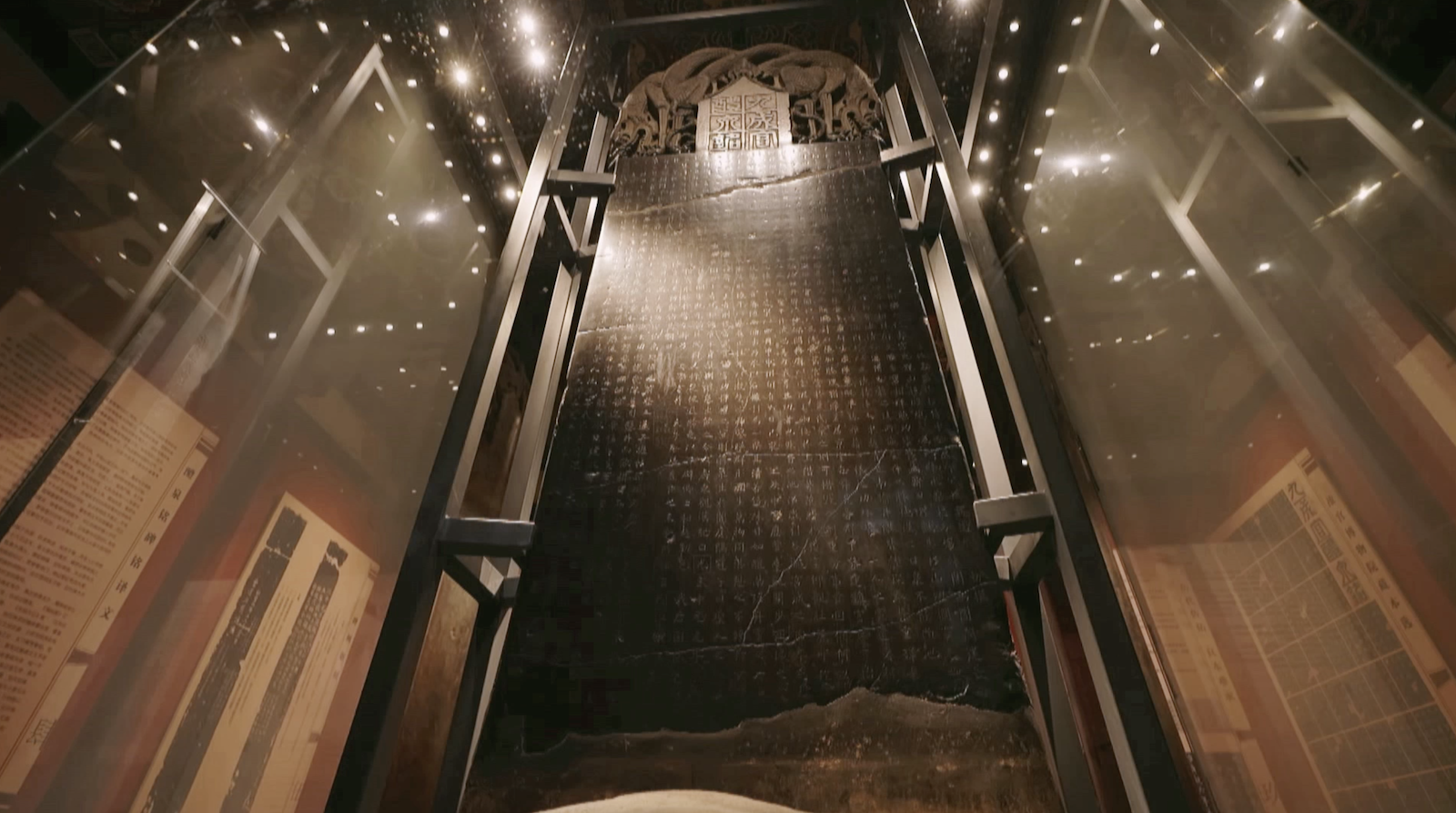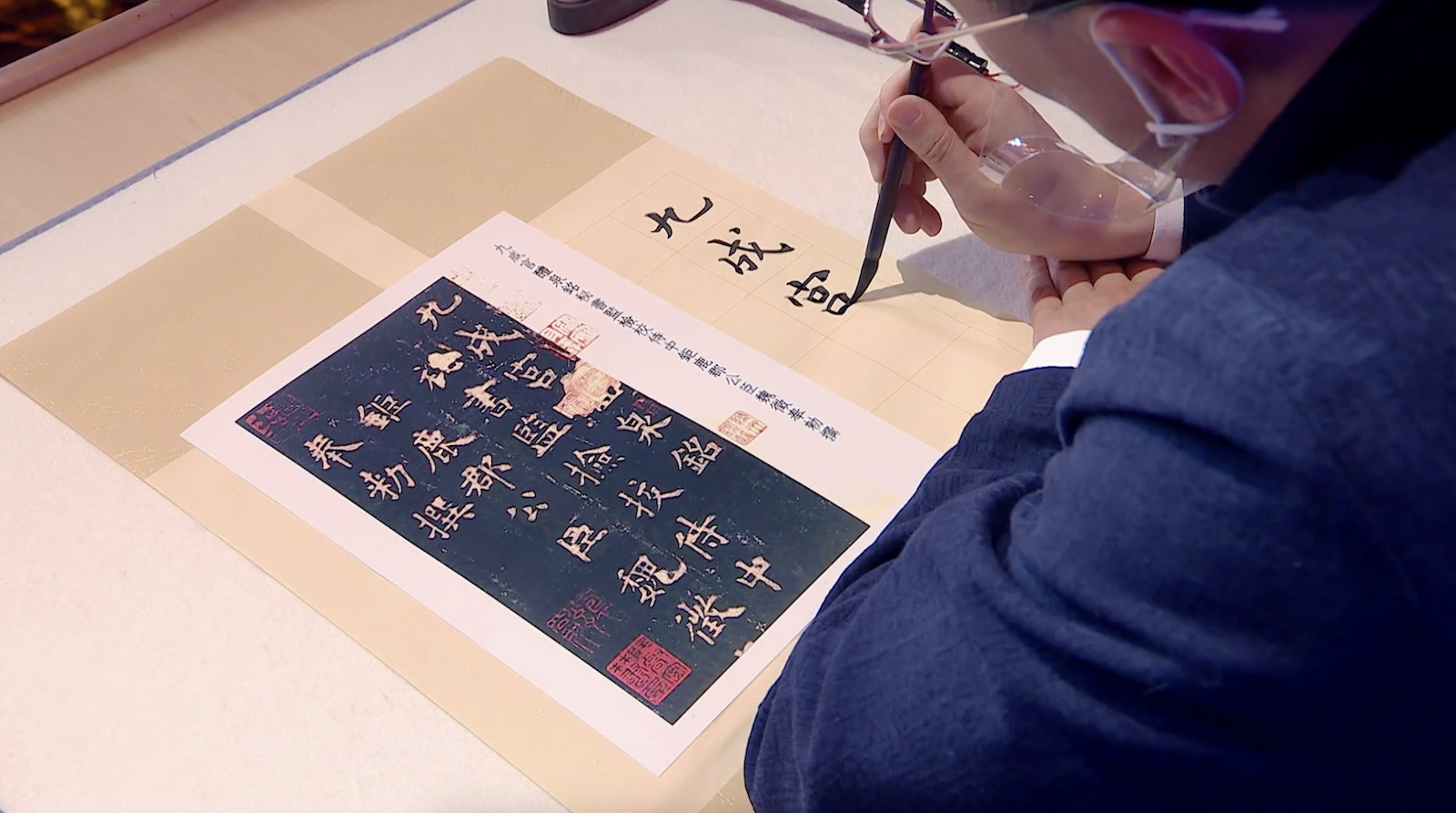"Jiucheng Palace Liquan Ming" is a calligraphy masterpiece of regular script inscription created by Ouyang Xun during the Tang Dynasty (618-907), around 1,400 years ago. Known for its elegant, beautiful, vigorous and powerful style, it has been acclaimed as one of the most representative regular script inscriptions in China. In around 1,200 characters, it depicts the peace and prosperity of the Tang Dynasty, with a perfect balance of strength and flexibility.
13:30

"Jiucheng Palace Liquan Ming" focuses on Jiucheng Palace in Linyou County, northwest China's Shaanxi Province. During the scorching summer months, Linyou County remains pleasantly cool. This made it a popular summer retreat during the Sui and Tang dynasties (581-907), from where four emperors used the palace to handle their state affairs.
In the year 631, while touring the Jiucheng Palace in Linyou, Emperor Taizong of the Tang Dynasty serendipitously found a spring, which solved the water supply problem in the palace. Delighted by this, Emperor Taizong named it "Liquan" in Chinese, which translates as "Sweet Spring." To commemorate this event, Emperor Taizong ordered imperial censor Wei Zheng to write the "Jiucheng Palace Liquan Ming" and calligrapher Ouyang Xun was commissioned to undertake the stone inscription.
Since the "Jiucheng Palace Liquan Ming" represented royalty, it had to be a solemn and meticulous work. Therefore, Ouyang Xun had to pay attention to the character structure and make every stroke precise. In the year 632, Ouyang Xun finally completed the enduring inscription of "Jiucheng Palace Liquan Ming." His precise structure and strokes make it difficult for future generations to imitate.

The "Jiucheng Palace Liquan Ming" stele is preserved in Linyou County, northwest China's Shaanxi Province. /CGTN
The "Jiucheng Palace Liquan Ming" stele is preserved in Linyou County, northwest China's Shaanxi Province. /CGTN
Besides its value in calligraphy, Professor Ye Peigui from the Capital Normal University noted the inscription recorded important historic information about Emperor Taizong of the Tang Dynasty.
"We know that the person who wrote this article was Wei Zheng. He was a famous official at that time. The article describes Emperor Taizong of the Tang Dynasty as someone who not only conquered territories but also embraced cultural virtues and cared for his people. It also clearly demonstrates his main administrative ideas, from his early military campaigns to his accession to the throne. The article also mentions the Liquan spring, using a sentence like "The spring water stirs up refreshing waves, washing away the filth of the past" to describe it. These famous words are from the "Jiucheng Palace Liquan Ming." The article is well-written and provides an excellent description of the story of Emperor Taizong," said Ye.
After more than a thousand years, the stele that bears the "Jiucheng Palace Liquan Ming" inscription still stands in Linyou County. Today, Linyou attracts calligraphy enthusiasts from all over the country to pay tribute to Chinese calligraphy through their own writings. However, it's a great pity that, due to the excessive amount of rubbing, the stele has suffered significant damages. Fortunately, a series of ancient rubbings, such as those from the Song Dynasty (960-1279), were also preserved to this day for the calligraphy to study.

A calligrapher copies the inscription of "Jiucheng Palace Liquan Ming" based on one of its rubbings. /CGTN
A calligrapher copies the inscription of "Jiucheng Palace Liquan Ming" based on one of its rubbings. /CGTN
In terms of copying the masterpiece, Professor Qiu Zhenzhong from Central Academy of Fine Arts believes that "Jiucheng Palace Liquan Ming" serves as a fundamental model of regular script, the standardization, consistency, and repeatability of which have greatly benefited those who learn Chinese calligraphy. He advised contemporary calligraphers to firstly write the horizontal stroke evenly and keep the distance between the two horizontal strokes consistent before pursuing higher goals.